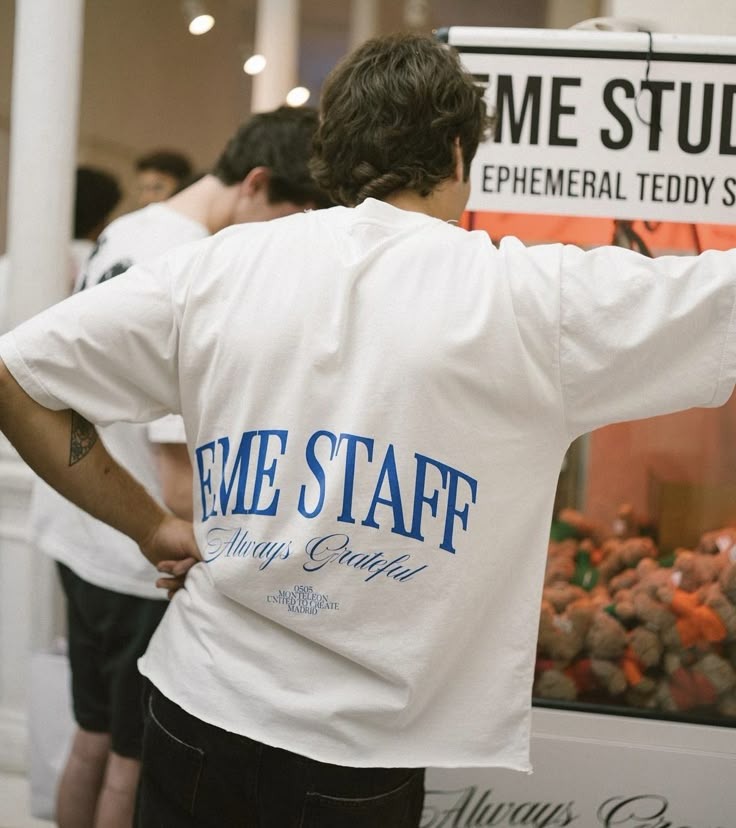Sweaters have long been an essential element of wardrobes around the world. They offer more than just warmth; they symbolize a rich history, a diverse cultural heritage, and a continuously evolving sense of style. From chunky knits to sleek modern designs, sweaters have carved out a unique place in both high fashion and everyday wear. This article explores the evolution, design, cultural significance, production methods, and future of the sweater, examining why this versatile garment remains a favorite across generations and geographies.
The Historical Roots of the Sweater
The history of the sweater dates back several centuries. Originally, sweaters were purely functional garments designed to provide insulation in harsh climates. Early versions were simple knitted garments made from wool or other natural fibers, crafted by local artisans to keep laborers, sailors, and soldiers warm during long hours outdoors. Over time, these utilitarian designs evolved as knitting techniques advanced and new fibers became available.
During the 19th century, the industrial revolution brought significant changes to textile production. Sweaters began to be produced on a larger scale, making them more widely available. This period saw the transition of the sweater from a niche, handmade item to a staple of everyday attire. The garment became associated not only with functionality but also with a sense of rugged, timeless style.
Evolution of Design and Style
Today’s sweaters are a far cry from their humble origins. Designers have reimagined the sweater in countless ways, blending traditional knitting methods with innovative designs. Sweaters now come in an array of styles—from classic crewnecks and V-necks to turtlenecks, cardigans, and pullovers. Each style offers a distinct aesthetic and serves different purposes, whether for casual outings, office wear, or formal events.
Modern knitwear is available in a variety of materials, including not only wool but also cotton, cashmere, and synthetics. This diversity in fabric choice has allowed for a broader range of textures and finishes. For instance, cashmere sweaters are prized for their softness and luxury, while wool offers durability and natural insulation. In recent years, blends that combine natural fibers with modern synthetic materials have emerged, offering enhanced performance, easier care, and a more refined finish.
The color palette and patterns of sweaters have also expanded. While traditional sweaters often came in muted, earthy tones, contemporary designs feature bold hues, intricate patterns, and even graphic prints. Cable-knit designs, fair isle patterns, and geometric motifs have become popular, transforming the sweater into a canvas for artistic expression. In many ways, the modern sweater balances the line between function and fashion, serving as both a practical garment and a statement piece.
The Sweater’s Role in Fashion History
Sweaters have always held a special place in the fashion world. In the mid-20th century, icons such as Audrey Hepburn and Steve McQueen popularized the sweater as a symbol of effortless style and understated elegance. The sweater became synonymous with a laid-back yet refined aesthetic, embraced by both celebrities and everyday consumers.
During the 1970s and 1980s, the sweater experienced a resurgence in popularity as designers began to experiment with knitwear. This era saw the introduction of oversized and slouchy styles, reflecting broader trends in casual fashion. The sweater’s ability to be both cozy and chic made it a favorite during transitional weather, when layering was essential. In contemporary fashion, the sweater is celebrated not only for its practicality but also for its versatility. It can be dressed up with tailored pants and accessories for a sophisticated look or paired with jeans and sneakers for a more relaxed, streetwear-inspired outfit.
Craftsmanship and Production Techniques
The production of sweaters is an art form that combines tradition with modern technology. Hand knitting, once the dominant method of production, is still valued today for its artisanal quality and uniqueness. Many luxury brands and independent designers continue to produce hand-knitted sweaters, emphasizing the craftsmanship involved in creating each piece. These sweaters often become treasured items, passed down as heirlooms or collected as works of art.
However, the majority of sweaters today are produced using advanced machinery that can replicate intricate knit patterns with precision and consistency. Digital knitting machines and computer-aided design software have revolutionized the industry, enabling mass production while still allowing for creative complexity. These technologies ensure that sweaters are not only aesthetically pleasing but also durable and comfortable.
Sustainability has also become a significant consideration in sweater production. Many manufacturers are turning to eco-friendly materials, such as organic cotton and responsibly sourced wool, to reduce the environmental impact of their products. Innovations in recycling and upcycling are transforming old sweaters into new, fashionable pieces, thereby extending the life cycle of the garment and reducing textile waste.
Cultural Significance of the Sweater
Sweaters hold a unique cultural resonance across the globe. In many regions, the sweater is more than just a garment—it is a symbol of comfort, family, and tradition. In countries with colder climates, sweaters are a practical necessity, often associated with memories of winter gatherings, cozy evenings by the fire, and the warmth of community. The sweater embodies a sense of familiarity and care, often crafted by loved ones as gifts or handmade with personal significance.
In other cultures, the sweater has become a vehicle for artistic and political expression. Graphic or slogan-adorned sweaters can serve as statements of identity, solidarity, or dissent. The garment’s large, unobtrusive surface makes it an ideal medium for conveying messages, whether promoting social causes, celebrating cultural heritage, or simply showcasing an individual’s unique style.
The sweater also plays an important role in professional and academic settings. In many schools and workplaces, a sweater can be part of a uniform or a casual dress code, symbolizing a sense of belonging and shared identity. This widespread acceptance and adaptability have helped the sweater transcend the boundaries of social class and age, making it a universally appreciated item.
The Intersection of Comfort and Innovation
At its core, the sweater is about comfort. The soft, warm fabric envelops the wearer, providing a sense of security and ease. This intrinsic quality has made the sweater a go-to item during the colder months, offering a simple solution to staying warm without sacrificing style. The tactile nature of the sweater, whether it’s a chunky knit or a fine cashmere blend, creates a sensory experience that is both soothing and luxurious.
Innovations in fabric technology have further enhanced the comfort of sweaters. Moisture-wicking fibers, for instance, help regulate body temperature by drawing sweat away from the skin, while advanced blends can offer stretch and resilience. These modern fabrics maintain the warmth and softness of traditional knitwear while improving performance and durability. As a result, contemporary sweaters are designed not only to be stylish but also to meet the demands of an active, modern lifestyle.
Global Trends and the Future of the Sweater
The global fashion landscape is in constant flux, and the sweater is no exception. While classic styles will always have a place in wardrobes, the future of the sweater lies in its ability to innovate and adapt. Designers continue to push the boundaries of knitwear, exploring new textures, forms, and technologies to reinvent this timeless garment.
One emerging trend is the integration of smart textiles into sweater design. Researchers are experimenting with materials that can monitor body temperature, adjust insulation levels, or even interact with digital devices. Such innovations could transform the sweater into a multifunctional garment that not only keeps you warm but also enhances your daily activities. Imagine a sweater that adapts to changing weather conditions or one that can charge your smartphone through embedded solar fibers—these futuristic ideas are gradually moving from concept to reality.
Another trend shaping the future of the sweater is the growing emphasis on sustainability. As consumers become more environmentally conscious, there is increasing demand for ethically produced, eco-friendly knitwear. Brands are responding by investing in sustainable materials and transparent production methods. The rise of circular fashion, where garments are designed for longevity and recyclability, is particularly relevant to the sweater industry. By incorporating recycled fibers and promoting repair and reuse, manufacturers are working to reduce the carbon footprint of their products while maintaining high standards of quality and style.
The Role of Customization and Personal Expression
In today’s fashion landscape, personalization is key. Consumers are no longer satisfied with mass-produced, generic garments; they want items that reflect their individual tastes and lifestyles. Sweaters, with their versatile nature and expansive surface area, are ideal candidates for customization. Advances in digital printing and embroidery have made it easier than ever to add unique touches to a sweater, whether it’s a monogram, a custom pattern, or an artistic graphic.
Customization extends beyond aesthetics—it also involves tailoring fit and function to suit personal needs. Many brands now offer made-to-measure sweaters, allowing customers to choose fabrics, colors, and design details that match their preferences. This bespoke approach not only enhances the wearing experience but also fosters a deeper connection between the consumer and the garment. In a world where individuality is celebrated, the customized sweater becomes a personal statement, a reflection of the wearer’s style and identity.
Sweaters in Pop Culture and Media
The influence of sweaters extends into the realm of pop culture and media. Iconic characters in films and television have often been seen sporting memorable sweater designs, turning them into symbols of personality and charm. From the cozy cardigans of beloved literary characters to the bold, statement-making jumpers worn by pop stars, the sweater has played a pivotal role in shaping cultural narratives.
Social media has further amplified the sweater’s presence in contemporary culture. Influencers and fashion bloggers showcase innovative ways to style sweaters, offering tips on layering, accessorizing, and transitioning the garment between seasons. Online communities dedicated to knitwear share DIY tutorials, reviews, and personal stories, creating a vibrant ecosystem of sweater enthusiasts. This digital dialogue not only fuels trends but also reinforces the sweater’s status as a dynamic and evolving element of modern fashion.
Economic Impact and Industry Challenges
The sweater industry represents a significant segment of the global fashion market. With its broad appeal and timeless functionality, knitwear has become a lucrative product for both high-end designers and mass-market retailers. The production and sale of sweaters generate considerable economic activity, from local artisan workshops to large-scale manufacturing plants.
However, the industry also faces challenges. The demand for fast fashion has pressured manufacturers to produce sweaters quickly and cheaply, sometimes at the expense of quality and sustainability. This trend has led to concerns over environmental degradation and labor practices in certain production hubs. In response, many consumers and brands are championing ethical production methods, demanding transparency and accountability in every step of the manufacturing process. By investing in fair trade practices and eco-friendly technologies, the sweater industry can work towards a more sustainable and responsible future.
The Enduring Appeal of the Sweater
What makes the sweater so enduring? Its appeal lies in its perfect balance of comfort, versatility, and style. Whether worn during a brisk winter morning or layered as an accessory in cooler summer evenings, the sweater adapts to various climates and occasions. Its ability to convey a sense of warmth—both physical and emotional—makes it a beloved garment worldwide. Sweaters evoke memories of cozy gatherings, quiet moments with a book, or a warm embrace on a cold day.
In addition, the sweater has the unique power to evolve with fashion trends without losing its inherent charm. Classic designs remain popular year after year, while innovative reinterpretations attract new audiences. This adaptability ensures that the sweater continues to resonate with diverse generations, cultures, and personal styles.
Conclusion
From its origins as a simple, functional garment to its current status as a multifaceted icon of style and comfort, the sweater has journeyed through centuries of cultural, technological, and economic change. Its evolution is a testament to the enduring human desire for warmth, self-expression, and quality craftsmanship. Today, the sweater stands as a bridge between the past and the future—a garment that honors tradition while embracing innovation.
As we look forward, the future of the sweater appears bright. With advancements in smart textiles, sustainable materials, and customization technologies, the humble sweater is set to become even more integral to our daily lives. It remains a symbol of comfort, a canvas for creativity, and a reminder that sometimes the simplest items can have the most profound impact on our personal and cultural identities.
In a world where trends come and go, the sweater’s timeless appeal lies in its ability to offer both protection and expression. It invites us to appreciate the blend of art and utility, the warmth of a well-crafted piece, and the potential for personal storytelling woven into every thread. As the sweater continues to evolve, it will undoubtedly remain a cherished part of our wardrobes and an enduring emblem of both style and substance.



